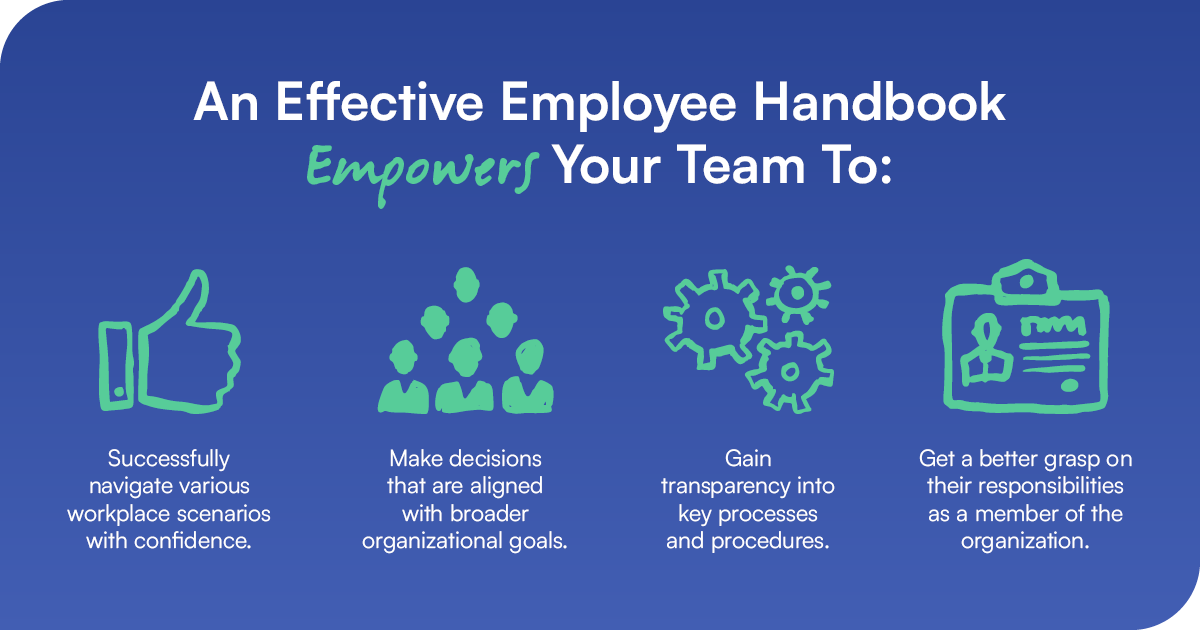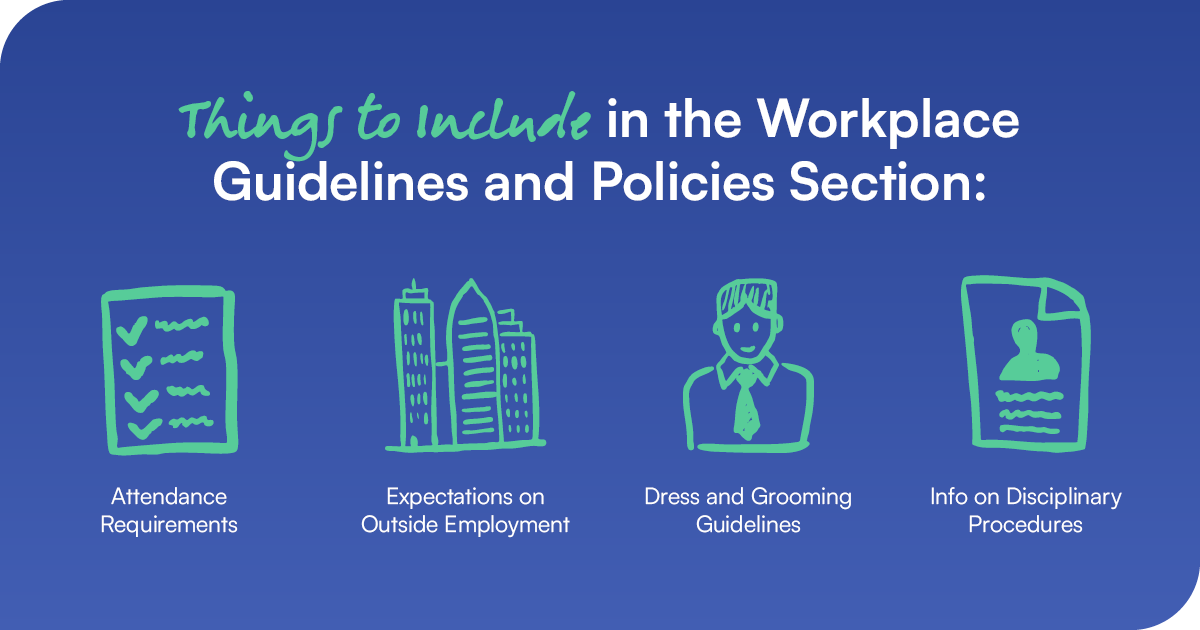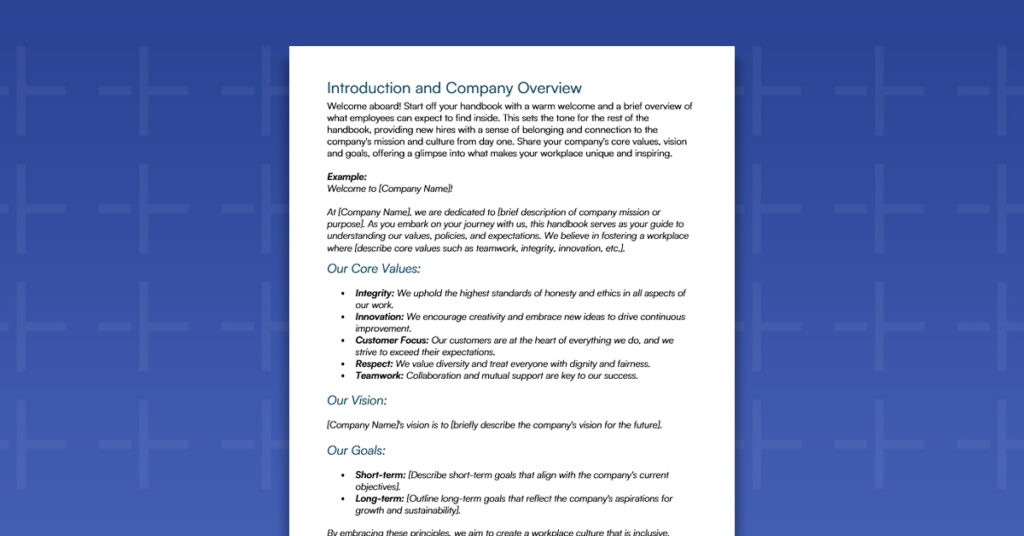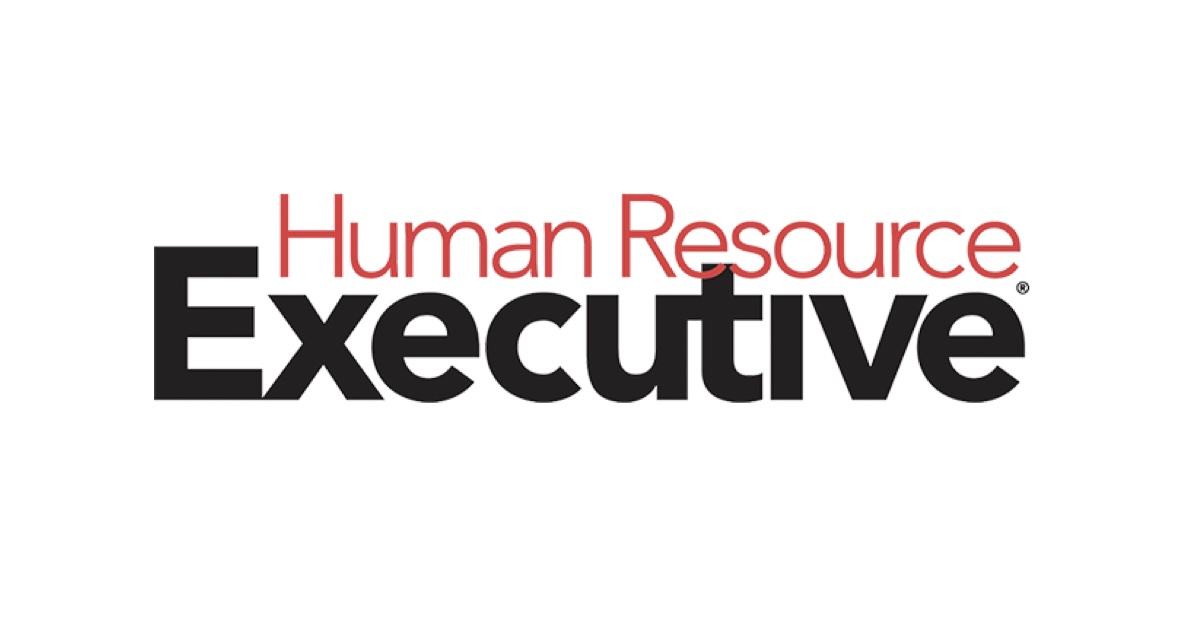A thriving workplace runs on clear expectations—after all, when employees know what’s expected of them, they feel more confident, supported and empowered to succeed. That’s where a well-crafted employee handbook comes in. While it’s not legally required, skipping it isn’t an option if you want to set the right tone for your organization.
Our employee handbook template is designed to take the guesswork out of the process, helping you build a guide that’s both practical and meaningful.
In this post, we’ll walk you through a simple yet effective handbook template and showcase standout examples of companies that have nailed it.
What is an Employee Handbook?
An employee handbook is a comprehensive printed or digital document that lays out essential policies, procedures and expectations for your team. You’ll want to include information on conduct standards, benefits and company culture. Think of it as the go-to guide for navigating the workplace, ensuring fairness and consistency for all employees.
A well-written employee handbook isn’t only helpful for employees. Because it features a definition of rights, responsibilities and procedures, it helps keep your company on track, too.
Most importantly, successful employee handbooks are updated regularly to reflect evolving regulations, laws and company guidelines. This is not a set it and forget it document!
Are Employee Handbooks Legally Required?
No, employee handbooks aren’t legally required. While some states might mandate written policies on specific issues like leave types, there’s no universal rule forcing employers to have a handbook.
That being said, we’re here to underscore the importance of developing one. In our experience, the best way to create a trusted workplace is to establish clear, transparent processes. And that’s where your employee handbook fills a gap.
Why Employee Handbooks Are Important
Your employee handbook is pivotal in fostering a positive and productive workplace environment. Beyond setting clear expectations and educating employees on company code, think of a handbook as a foundational resource that embodies an organization’s values and culture.
A strong employee handbook empowers your team members to:
- Successfully navigate various workplace scenarios with confidence.
- Make decisions that are aligned with broader organizational goals.
- Gain transparency into key processes and procedures.
- Better understand their general responsibilities and expectations
From a stakeholder perspective, employee handbooks also offer a reference point for both employees and employers, promoting a safe, fair and transparent workplace. This helps mitigate legal risks by ensuring consistency and compliance, safeguarding the interests of both employees and the organization.
Ultimately, employee handbooks are more than just policy documents—they’re vital tools teams leverage to cultivate a better employee experience and a more trusted workplace.

Employee Handbook Sample Sections
Let’s break down the most important components an effective staff handbook template should include.
Introduction and Company Overview
Welcome aboard! Begin your handbook with a greeting and brief overview of what employees will find inside. Your introduction sets the tone for the rest of the handbook, providing new hires with a sense of belonging and connection to the company’s mission and culture from day one. This is the perfect place to share your company’s core values, vision and goals, offering a glimpse into what makes your workplace unique.
Employment at Will Statement
Next comes the Employment at Will Statement, which dives into the employment relationship between the company and its employees.
This portion of your employee handbook specifies that either the employer or the employee can terminate the employment relationship at any time, with or without cause, and with or without notice. This statement establishes the default employment status (unless otherwise specified in an employment contract or collective bargaining agreement).
It also clarifies that employment with the company is not guaranteed for any specific duration and can be ended by either party under the terms outlined in the handbook and applicable law.
Commitment to Diversity, Equity and Inclusion
The Commitment to Diversity, Equity and Inclusion section outlines the company’s policies and practices regarding equal employment opportunity and non-discrimination. It affirms the organization’s commitment to building a workplace that values diversity in all its forms, including but not limited to race, gender, ethnicity, religion, sexual orientation and disability status. Because of this, it’s a can’t-skip portion of your employee handbook.
This section typically includes guidelines on reasonable accommodations for employees with disabilities, demonstrating compliance with federal and state laws such as the Americans with Disabilities Act (ADA). It also provides procedures for reporting incidents of harassment, discrimination or retaliation, emphasizing the company’s zero-tolerance stance towards such behaviors.
Doubling Down on DEI
Recent months (and executive orders) have highlighted how important it is to maintain DEI initiatives. Your employee handbook offers an ideal opportunity to showcase consistency around your company’s commitment to creating a safe and fair environment.
Conflicts of Interest and Confidentiality Policies
Trust is the cornerstone of any successful workplace—and offering up Conflicts of Interest and Confidentiality Policies is an excellent way to build it. Better yet, by including these in your handbook, you can rest assured that you’re doing your due diligence to safeguard sensitive information within the company.
In this portion of your handbook, you’ll define what exactly constitutes a conflict of interest. (This includes situations where personal interests could potentially interfere with an employee’s ability to perform their job impartially and in the best interest of the company.)
You’ll also want to outline expectations around handling confidential information, both during and after employment. For example, if employees are required to adhere to confidentiality agreements that safeguard proprietary information, client data and other sensitive materials, this is your chance to make that clear!
Employment Relationship Policies
Next up, we’ll include Employment Relationship Policies. Here, you’ll outline clear expectations and guidelines that shape the employer-employee relationship, such as:
- Employee Privacy: Outline how you’re protecting personal information and complying with privacy laws.
- Employment Classification: Define the various worker categories (full-time, part-time, contractor, and so on).
- Outline workweek hours: Don’t forget to include information on breaks, timekeeping and overtime!
- Access to personnel files: Ensure that employees can access these files, maintaining transparency while simultaneously respecting confidentiality.
- Employment of Relatives Policies: Include information about the employment of relatives and domestic partners to prevent conflicts of interest and ensure fairness.
- Separations of Employment: Detail procedures for both voluntary and involuntary separations, ensuring clarity during the process.
Workplace Guidelines and Policies
Another indispensable section lays out Workplace Guidelines and Policies. This is an effective way to set standards for employee conduct and performance within the organization.
Make sure to include:
- Attendance requirements, emphasizing punctuality and adherence to work schedules and job performance expectations.
- Expectations on outside employment, clarifying permissible activities.
- Guidelines for appearance, establishing a professional standard suitable for the workplace.
- The disciplinary procedure, ensuring fair treatment and corrective measures for policy violations, promotes a productive and harmonious work environment.

Social Media Use
We live in a world where a single post can go viral in minutes—so it’s no surprise that social media has become a key part of workplace culture, too. But with that power comes the responsibility to use it wisely.
Including clear guidance on social media use in your employee handbook helps employees understand how to balance personal expression with protecting the company’s reputation.
It’s also important to remember that “acceptable use” can mean very different things to different people. Don’t leave it up to interpretation. Spell out your expectations around how company tech should be used. Make sure to include policies that cover data security, ethical conduct and responsible communication, both inside and outside the workplace.
Employee Benefits and Company Perks
Remember when you started your new role and needed to get up-to-speed with all things benefits-related? Consider this a great chance to share a comprehensive overview of the various benefits and perks available to employees. Another benefit? This section illustrates your company’s commitment to keeping employees both happy and healthy. It’s a win-win.
To check all the boxes, make sure you include detailed information on:
- Insurance options including medical, dental, and vision insurance
- Group life insurance
- Short and long-term disability coverage
- Workers’ compensation
- 401k plan
This is also the perfect place to dive into various types of leave, including holidays, vacation, sick leave, family and medical leave, bereavement leave, time off for voting and more.
Workplace Safety
Fostering a trusted work environment is at the heart of an employee relations strategy. Show off the processes and procedures you have in place to protect employees in this section.
Outlining expectations related to workplace safety is one of the most important functions of an employee handbook. In a time of need, this is likely the first place employees will turn to determine how to tackle the situation. Because of this, the clearer, the better.
Include:
- Comprehensive guidelines against harassment and discrimination based on protected characteristics like race, gender, religion and sexual orientation. This ensures that all employees are treated with the respect and dignity they deserve.
- Procedures for reporting and addressing any instances of harassment or discrimination, with strong confidentiality and anti-retaliation protections in place. (If you have a program like Speakfully in place to offer anonymous reporting, don’t forget to mention it here!)
- The company’s commitment to maintaining a drug-free and alcohol-free workplace, a smoke-free environment, and robust workplace violence prevention measures.
- Emphasis on the company’s commitment to safety through detailed emergency procedures and protocols for emergency closings.
- Guidelines for visitors to ensure all individuals on premises adhere to safety requirements.
By educating employees on their responsibilities for accident reporting, emergency procedures, and overall workplace safety protocol, this section underlines the company’s dedication to creating a healthy and secure workplace for everyone.
Acknowledgement of Receipt
Last (but certainly not least!), we have the Acknowledgement of Receipt section. This crucial component ensures employees have received, read and understood the handbook’s contents, including the harassment policy.
Here, you’ll include a form or statement that employees must sign and date, serving as a formal record of their awareness of the company’s policies, procedures, expectations and their agreement to adhere.
Thanks to this portion of the handbook, you can mitigate potential disputes and reinforce the importance of the handbook as a key resource for maintaining a fair, safe and transparent work environment.
Tips for Creating and Enforcing an Employee Handbook
Before you start putting together your own (and we have a template to help), here are some key tips to consider when creating and enforcing your employee handbook:
- Involve key stakeholders: Be sure legal counsel, HR professionals and key stakeholders within your organization review the handbook. This ensures compliance with laws and alignment with company guidelines.
- Incorporate it into onboarding: The best time to introduce employees to your handbook? During the onboarding process. By doing so, you’ll familiarize new hires with company expectations and culture from the outset.
- Obtain signed acknowledgments: It’s imperative you require all employees to sign an acknowledgment form confirming they have received, read and understand the contents of the handbook. That way, you’ll avoid any potential misunderstandings.
- Don’t underestimate the power of an employee handbook template: An HR handbook template is a great starting point. Plus, following a guide will ensure you touch on every essential topic.
- Regularly review and update: Your employee handbook can—and should— be updated regularly! Schedule reviews of the handbook to reflect changes in laws, regulations and company best practices, ensuring it remains relevant and up to date.
- Offer a digital copy: Provide employees with easy access to a digital copy of the handbook, allowing for quick reference and updates as needed. Bonus points if it’s easily findable on your company intranet.
- Ensure readability: Use concise language, avoid jargon and organize content in a user-friendly format to enhance comprehension. Plus, it should be accessible for all employees—including folks with blindness or deafness.
- Include disclaimers: Cover your bases by incorporating appropriate disclaimers to clarify that the handbook is not a contract. This affirms that policies are subject to change at the discretion of the organization. Any successful staff handbook template will include this!
Employee Handbook Examples
Checking out great examples of employee handbooks is the perfect way to get inspired to create your own. Here are a few organizations with handbooks we admire:
HubSpot
There’s a lot to love about HubSpot’s employee handbook. For starters, it’s digestible. Instead of giving the employee long chunks of text to read, HubSpot provides its handbook in presentation format, offering ample imagery. The handbook also provides tangible examples of how HubSpot employees can fulfill the duties outlined in the handbook, including our favorite, “Use good judgment.”
Volkswagen
Another favorite is Volkswagen. What we love about this example is the emphasis on unity and inclusion—an essential addition to any compelling handbook. In addition, it provides clear guidance on issues such as Conflicts of Interest, benefits and compliance.
JP Morgan
Banking giant JP Morgan also has a brag-worthy employee handbook. Explore it to find over 100 pages worth of detailed information about everything an employee may need to know, from compensation to learning and development and beyond.
Home Depot
Next up we have Home Depot. This retail giant lands itself on our list of favorite examples of employee handbooks because of its easy to navigate format, inclusion of all necessary processes and beliefs, and comprehensive nature. Home Depot also scores points for how its handbook is cohesive with the rest of the company’s branding.
National Federation of Independent Business (NFIB)
NFIB’s sample employee handbook starts with a letter from an executive director, which we love. It clearly covers necessary details, from dress code expectations to personnel file access.
Connections Education
With 83 pages worth of invaluable information, Connections Education’s handbook certainly covers its bases. Its matter-of-fact style includes all the mandatory information and does an excellent job of introducing new hires to the organization.
Fashion Institute of Technology (FIT)
Last (but not least), FIT makes the cut for our list of best staff handbook examples. This handbook includes live links to more documentation that may answer questions, which we believe is a valuable addition. The handbook also outlines employee expectations in a concise yet detailed manner, leaving little room for interpretation. (Which, in the case of an employee handbook, is a great thing.)
Improve Your Employee Relations with HR Acuity
Creating (and enforcing!) an employee handbook is not a small task—but HR Acuity is here to support you in every facet of your employee relations journey. Our robust HR case management software provides a centralized platform for tracking, investigating and resolving employee relations matters. With HR Acuity, you can ensure every case is handled with the utmost fairness and transparency, mitigating risks and protecting your organization’s reputation.
Ready to take the first step towards a safer, more transparent workplace? Download our free employee handbook template and get started today.




